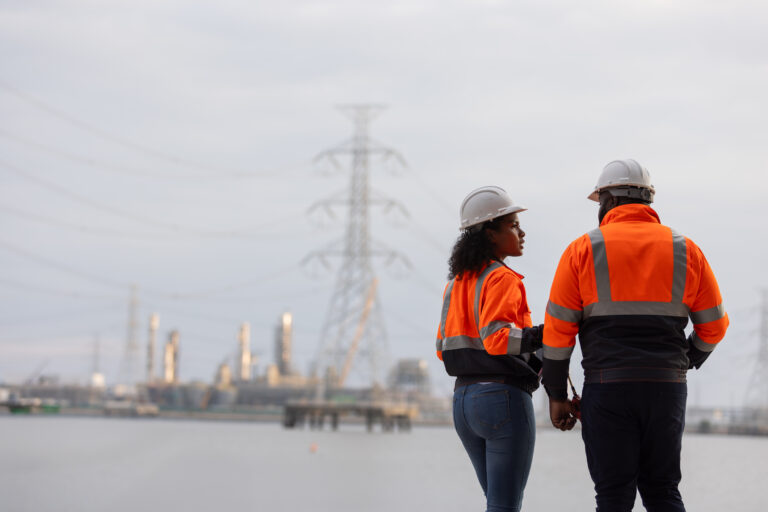Net Zero In a Nutshell
by Zen Family Member, Joseph Everson
Introduction:
So I have been asked to put together a blog post around my favourite subject ….. Net zero! Just a disclaimer before you read this, I am not an expert by any stretch of the imagination and I am not a writer (just setting the expectations right from the start), but I do love all things sustainability and renewable energy.
You don’t have to look far these days to see the words Net Zero & Sustainability but one of the issues I see daily is people that do want to work towards the net zero target but are just so confused by where to start and what it all means. That is why I wanted to put this blog together to give a simple breakdown of all things sustainability and what they mean.
What is Net Zero?
So, what is Net Zero? Net Zero is a term used to describe a company’s commitment to reducing its carbon footprint to a level where it is no longer contributing to the greenhouse effect or global warming. This can be an incredibly challenging goal for any company to achieve but with the right information and a strategy in place this can be done.
How can you achieve Net Zero?
What are some of the things that a company can do to achieve net zero? Here are some steps to give a quick guide:
1. Conduct a carbon audit: The first step in achieving net zero is to understand where your company’s carbon emissions are coming from. This can be done through a carbon audit, which will help you identify your company’s carbon hotspots and the potential for reducing emissions.
2. Set ambitious emissions reduction targets: Once you know where your company’s emissions are coming from, you can set ambitious targets for reducing them. These targets should be specific, measurable, achievable, relevant, and time-bound (SMART)
3. Implement energy efficient measures: One of the most effective ways to reduce carbon emissions is to use energy more efficiently. This can include things like upgrading to energy-efficient appliances, using LED light bulbs, and reducing energy consumption in your company’s operations
4. Invest in renewable energy: Another way to achieve net zero is to invest in renewable energy sources like solar, wind, or hydroelectric power. This can be done through installing renewable energy systems on your company’s premises or purchasing renewable energy credits
5. Offset remaining emissions: Even with the best efforts, it may not be possible for some companies to eliminate all their carbon emissions. In this case, they can offset their remaining emissions through activities such as reforestation, carbon capture, and renewable energy projects
Net Zero terms
There are many other terms that you will hear surrounding the world of net zero such as ESOS, SECR, SHDF, EPC and a million other acronyms for all things energy. As a bonus I have put together list of the most common ones and what they stand for and mean as a quick reference guide so you can talk a glass eye to sleep just like me!
ESOS– The ESOS (Energy Savings Opportunity Scheme) is a UK government-mandated energy assessment scheme that requires large companies and organizations to measure their energy consumption and identify cost-effective energy saving measures. The scheme is designed to help organizations save energy, reduce costs, and lower their carbon emissions. Under the ESOS regulations, organizations must conduct energy assessments at least once every four years and report their findings to the Environment Agency. The assessments must be carried out by qualified assessors, who will help organizations identify and evaluate opportunities for energy savings. The ESOS scheme is intended to encourage organizations to become more energy efficient and to reduce their environmental impact
EPC – An Energy Performance Certificate (EPC) is a report that provides information on the energy efficiency of a building. EPCs are typically required when a building is constructed, sold, or leased, and they provide a rating of the building’s energy efficiency on a scale from A (most efficient) to G (least efficient). The EPC assesses the energy performance of the building based on factors such as the insulation, heating and hot water systems, and lighting, and it provides recommendations for ways to improve the energy efficiency of the building. The goal of an EPC is to help reduce energy consumption and greenhouse gas emissions from buildings, as well as to save money on energy costs for the owner or occupants of the building.
SHDF – The Social Housing Decarbonisation Fund (SHDF) is a government-funded program that provides financial assistance to social housing groups to reduce carbon emissions in their housing stock. This can be achieved through a variety of means, such as retrofitting homes with energy-efficient appliances and building materials, installing renewable energy systems, and implementing other measures to increase energy efficiency. The goal of the SHDF is to help social housing groups reduce their carbon footprint and contribute to the overall effort to combat climate change. The funding provided by the SHDF can be used to cover the costs of these types of initiatives, as well as any related research, development, and planning activities
SECR-Streamlined Energy and Carbon Reporting (SECR) is a framework for companies to report on their energy and carbon emissions in a standardised way. It is part of the UK government’s efforts to reduce greenhouse gas emissions and improve energy efficiency.
Under SECR, eligible companies are required to report on their energy use and carbon emissions in their annual reports. This includes information on their energy consumption, the sources of their energy, and their efforts to reduce energy use and emissions. The reporting requirements are designed to be straightforward and streamlined, with the aim of reducing the burden on businesses.
In addition to reporting their energy and carbon emissions, companies are also encouraged to set energy reduction targets and implement energy efficiency measures. This helps to further reduce their carbon footprint and contribute to the UK’s efforts to combat climate change.
SECR applies to large companies and public sector organizations in the UK and is seen as a more flexible and cost-effective alternative to the previous mandatory reporting framework, the Carbon Reduction Commitment (CRC). It aims to provide a clear and consistent approach to energy and carbon reporting, helping companies to demonstrate their commitment to sustainability and reduce their environmental impact
Conclusion
These are just a few but I would be here a month of Sundays trying to list them all! The information here should be enough of a starting block for you to start your net zero journey but if you are still not sure exactly where to start, here at Zenergi we have entire teams who live for this sort of thing and will always be more than happy to provide information and advice to helping you reach net zero. Just be mindful that if you want to talk to me about it then I will probably still be talking to you by the weekend when you are just trying to relax!
Further information check out Zenergi Zen Zero













